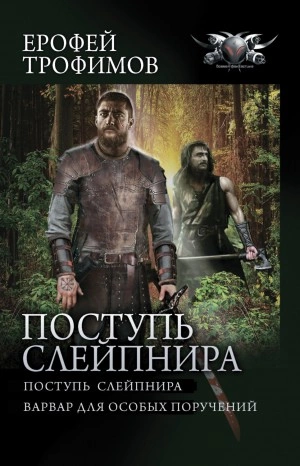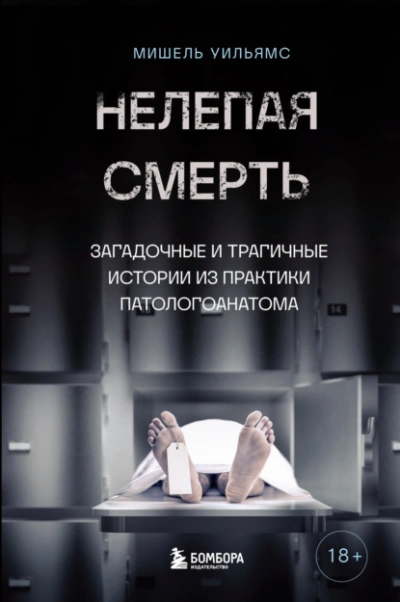Шрифт:
Интервал:
Закладка:
Key words: autopoiesis, innovation, coevolution, coemergence, non-linearity, self-organization, system, complexity, emergence, enactivism.
Eduard M. Soroko. Complexity, integration, synthesis, harmony, measure, quality as highest ideological values and heritage of modern civilization
New time, the information age, requires a new knowledge on harmonization of distributed systems as complex ensembles and their structures. Existing information technologies are based on information as something that is sent through the channels of communication, and therefore are insufficient. Information technology of the second generation, based on the restricted diversity has not been created yet. It constitutes a strategic innovative resource of society and is designed for search of structural harmony of systems. Harmonization of systems is provided by binding the collective variable that expresses their states (relative entropy) to one of the invariants of its nodal values. This opens up entirely new and very broad prospects for understanding the world of objects as systems and world of systems of objects. In particular: regularly organize the inner space of any system consisting of a number of relatively independent, multiscale sub-systems – events, subdivisions, strata, components; ensure harmonization processes of structurally complex whole while giving it a high quality of functional, performance, aesthetic nature; design the optimal structural organization of complex systems while making their modes of operation more efficient; ensure the competitiveness of composite materials; diagnose complex systems viewed as integral units, as organisms, in terms of their normal or pathological ways of functioning; minimize costs of finding effective variants of production cycles and production processes, while improving dramatically the control of the experiment; during epidemics reliably make the selection of the most effective treatment options for human and animal therapy under time pressure; carry bioindication of states of environmental systems, etc.
Key words: Harmony, disharmony, complexity as addition, the integral measure states of systems, quality, synthesis, limited variety, information entropy, generalized golden sections, nodes measures, universal principles, object as a system, the system objects, structure-attractors, synergetics, transdisciplinarity.
Helena N. Knyazeva and Elena S. Kurkina. Space-time Dynamics of Evolutionary Processes in Complex Systems.
The evolutionary model elaborated by Sergei P. Kurdyumov is considered in the article. Some key ideas put forward by him constitute a basis for development of the methodology of sudy of complex selforganizing systems, called also synergetics. Four important theoretical notions form a fundament of this evolutionary model: connection between space and time, complexity and its nature, blow-up regimes, in which self-organization and rapid, avalanche-like growth of complexity occur, evolutionary cycles and switching of different regimes as a necessary mechanism for maintenance of "life" of complex structures. The methodology allows to understand the nature of innovative shifts in nature and society and to show a possibility of management of innovative processes and of construction of desirable future. Some approaches for possible application of this model for understanding of dynamics of complex social, demographic and geopolitical system are discussed.
Key words: innovation, construction of the future, coevolution, nonlinearity, instability, blow-up regimes, space and time, selforganization, synergetics, complex systems, tempoworlds.
Irina A. Beskova. The Methodology of Study of Cognitive Complexity.
The more complete pattern of the realities' interrelations than those, which are proposed by a classical epistemology, is introduced in the article. Moreover, it is just this configuration according to which the phenomenon of complexity is regarded. This position is caused by the idea that it is impossible to reveal the real roots of complexity if we limit ourselves by the world of physical reality as the only existing one. The notion of a human-dimensional complexity is imposed and the roots of its emergence are shown. For elaboration of cognitive resources, which are adequate to a complexity analysis the model of a vertical hierarchy of worlds, which are connected by the relation of creation, is proposed. It is argued that as an analogous one to the complexity dynamics in an external world we can regard the dynamics in a creative thinking sphere. Theme of dual – non-dual, the mind-body problem, the preconditions and consequences of the observer position in a cognitive process are investigated. The concepts of an integral complexity, of a creative complexity and non-dual simplicity are introduced. Cycles of the complexity dynamics, which are enough to express the wealth of structural phenomena transformations, are marked.
Keywords: methodology, complexity, embodiment, mind, creativity, knowledge, experience, duality, non-dual, integrity, consciousness, integral complexity, non dual simplicity.
Natalia M. Smirnova. The Concept of Communicative Complexity in the Framework of (Post)non-Classical Rationality Paradigme
Heuristic power and cognitive limits of the complexity concept in socio-cultural cognition is viewed in this paper. It is shown, that the use the concept of complexity seem to help us not only to recognize to what extent social thinking could assimilate basic ideas and norms of synergetics' thinking, but also to make more profound methodological reflection upon natural and social sciences' integration process. It is also substantiated, that the study of temporality semiotics as an instrument of complexity reduction appears to be one of the most significant aspects in methodological recognition of the above-mentioned process in social thinking and activity.
Key words: complexity, meaning, autopoesis, re-entry, reflexive self-reference, complexity observer, complexity reduction, temporality semiotics, natural and social sciences' convergence.
Julia S. Morkina. The complexity of creative activities
The meaning is investigated by methods of phenomenology and theory of complex systems. It is shown that a reflexive act as unit of separate meanings is never given to consciousness, but the meanings forms complex systems – concepts – in which the consciousness thinks. Concept may be both purely logical and coming from imagery. It is important that the concept grasped the basic properties of the object
relative to which the concept is formed. Art concepts differ from scientific and philosophical, and their constituting as complex systems of meanings we investigate separately. Artistic creativity is seen as a type of knowledge, able to be modeled in the framework of our models (autopoietic consciousness, complex dynamic act, a complex situation, the main component of which is the consciousness of subject). Insight is considered as a self-organizing of systems of meanings in the consciousness.
Keywords: meaning, complex systems, concept, consciousness, situation of creativity.
Stanislava A. Filipenok. The Complexity of a Personal Experience.
In the article, the analysis of notions of personal experience and personal knowledge is carried out by the virtue of nonlinear-dynamic and system approaches. Personal experience is considered as holistic and dynamic entity, and its constitutive cognitive capabilities are investigated in inextricable connection with each other. This methodology allows to explore a number of problems of the non-classical epistemology and of the modern cognitive sciences: how different facets of individual mental life are related with each other and environment in cognitive activity; what mechanisms underlie creation, the processes of self-consciousness and knowing of the external world; what interrelation of objective and subjective aspects of knowledge is in the structure of the personal knowledge and so on. Personal experience is represented as complex open system possessing emergent properties in regard to its particulars, which are specific mental capacities, and providing harmonious interaction of its elements. By the means of dynamic approach mental evolution of a person is described as a nonlinear process which is accompanied by periodic rise of a principally new personal knowledge and complicating of cognitive structures forming subject's consciousness.
Key words: complexity, system approach, non-linear-dynamic approach, personal experience, personal knowledge, personal meaning, becoming of personality, emergence, nonlinearity, subjective and objective knowledge, crisis, creation.
Mikhail A. Pronin. Complexity of a Man and his Healing: Virtualistics and Areteia
Some topical philosophical problems of understanding of ontology of inner space (world) of a man in the frames of study of virtual reality are under consideration in the article. Basic theoretical elements of virtual approach as a philosophical anthropological system in understanding of the school of N.A. Nosov (1952–2002), founder of the field of scientific research are briefly presented. Overall dimensions of the theoretical construct of "virtual man" are specified. Aims and content of activities are outlined; bodily character and cover of systems of activities of a theorist, researcher who uses notions of virtual reality and of practical man who applies these notions are analyzed. Areteia as a practical, applied virtualistics is expounded in oprrational form. Some its principles and laws are formulated. When using clinical material – the phenomenological description of idiopathy, some philosophical solutions of problems of practical medicine and of psychology of current importance are proposed; these solutions are based on the understanding of ontology of inner space (world) of a man.
Key words: virtual reality, areteia, system, operator, virtual, worldview, theory, ontology, principle, regularity.
Alexander N. Spaskov. The genesis principle of a complex manifold in the physical theory of everything: substance-information model of time
The paper discusses possible implications of simplicity approach towards unified description of complexity and variability of the phenomenalworld. The philosophical justification of the genetic program for constructing the physical «theory of everything» is proposed. It is shown that successful implementation of this program is possible via re-consideration of the metaphysical paradigm by introducing new fundamental entities. A hypothesis of the substance-information nature of time using revised notions of basic concepts like «substance», «temporal continuum» and «information» is presented. The hypothesis is based on the transitive-phase time concept, which allows for a clear description of the complex temporal structure of various dynamic processes and systems. The synthesis of linear, non-linear and cyclic
time models is realized on the basis of a universal representation. The papers also considers the application of revised metaphysical paradigm of motion for regenerative model of elementary particle, which helps to demonstrate a new mechanism of time flow and reduction of physical processes to informational ones.
Keywords: complexity, theory of everything, structure of time, substance, temporal continuum, information, non-linear time, cyclical time, interaction, action generator.
Tatiana V. Zaikovskaya. Demonstration of the Phenomenon of Information in Animate and Inanimate nature
Information as reflected diversity is an attribute of all natural objects. Human consciousness, when limiting diversity by separating redundant information, distinguishes it intelligible part. The essence of the process of systems development is complexity, improving of organization and diversity. The role of a man as intelligent being predetermined his participation in the processes of development through management. Management of development is limited artificial activities over the natural process. Study of the functioning of information in the objects of animate and inanimate nature makes it possible to determine the reasons of crisis states, to investigate its mechanisms, to show alternative ways of evolution, and to reveal ways ways to overcome the crisis.
Keywords: information, system approach, the limited variety, small factors, animate and inanimate nature, the processes of harmonization, management.
Vitaly G. Gorokhov. The Evolution of Complexity of Technical Systems.
In the article, complexity of machines is considered as a conglomeration of simple machines – from antique mechanics to "theathers of machines" in the 18th century. Complex systems is viewed as integrity: analysis and synthesis of machines in the theory of mechanisms and machines in the 19-20th centures. The author analyzes complex technical systems in systems engeneering: from technical systems to man-machine systems (the activity of man-operator as a complex system) and to sociotechnical systems (complex sociotechnical projects of the second part of 20th century, complexity as a composite nature-attempts of reduction, complexity of the process of creation of big (multudimentional) technical system. Complexty and simplicity of multidimentional and simultaneously of non-dimentional nanosystems in nanosystem engeneering are under consideration as well. Special attention is paid to evolution of complexity under the conditions of growth of technological risks.
Key words: complexity and simplicity, technical systems, macro and nano systems engeneering, social engeneering, technological risks.
Klaus Mainzer. Exploring Complexity: From Artificial Life to Artificial Intelligence and Cyberphysical Systems
The classical cybernetics in the Norbert Wiener's tradition is nowadays a part of the mathematical theory of complex systems and nonlinear dynamics. Only in these frameworks, building of structures and patterns in nature and technics can be explained and in computer models simulated. Self-organization and emergence became well-defined concepts and can be transferred to technical systems. In the first part of the article, the foundations of complex systems and of nonlinear dynamics are under review. As an application, the building of structures and patterns in complex cell systems, which are subject of system biology, is considered. In the second part, the application of complex system dynamics to evolution of brain and cognition is explored. The research gives us a prerequisite for development of cognitive and social robots, what the topic of the third partis. Neural network structures are not at all limited to individual organisms and robots. In the fourth part, the cyberphysical systems, by means of which complex self-controlling sociotechnical systems are modeled, are studied. The mathematical theory of complex systems and nonlinear dynamics provides us with foundation for understanding of self-organization and emergence in this field. Finally, the question of ethical and social general conditions for technical constructing of complex self-organizing systems are stated and discussed.
- Путеводитель по поэзии А.А. Фета - Андрей Ранчин - Детская образовательная литература
- Преступление. Наказание. Правопорядок - Енок Рубенович Азарян - Детская образовательная литература / Юриспруденция
- Коррупция: природа, проявления, противодействие - Коллектив авторов - Детская образовательная литература
- История государственного управления в России - Василий Щепетев - Детская образовательная литература
- Литература 5 класс. Учебник-хрестоматия для школ с углубленным изучением литературы. Часть 1 - Коллектив авторов - Детская образовательная литература
- Литература 5 класс. Учебник-хрестоматия для школ с углубленным изучением литературы. Часть 2 - Коллектив авторов - Детская образовательная литература
- Литература 8 класс. Учебник-хрестоматия для школ с углубленным изучением литературы - Коллектив авторов - Детская образовательная литература
- Жилищное право. Краткий курс - Коллектив авторов - Детская образовательная литература
- Общая вирусология с основами таксономии вирусов позвоночных - Коллектив авторов - Детская образовательная литература
- Гражданское право. Части вторая и третья. Краткий курс - Коллектив авторов - Детская образовательная литература







